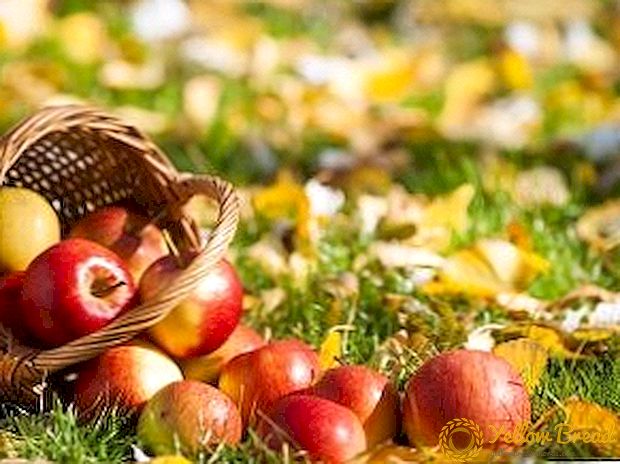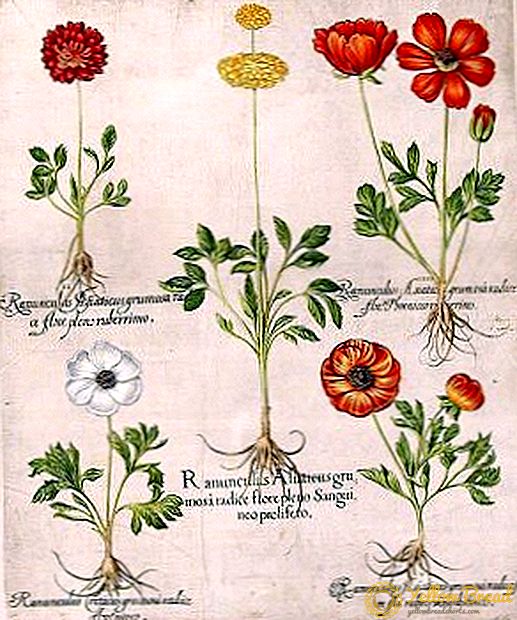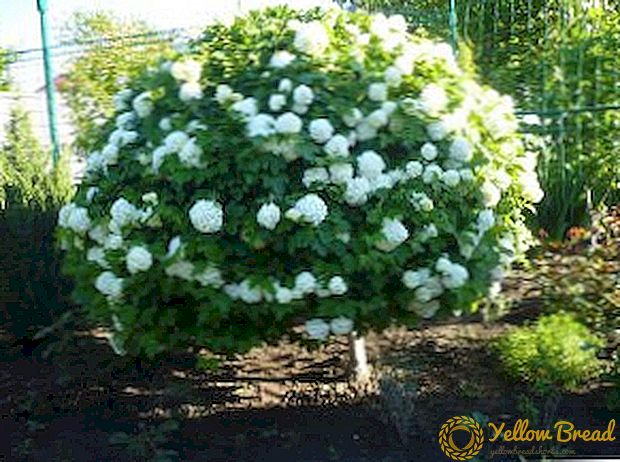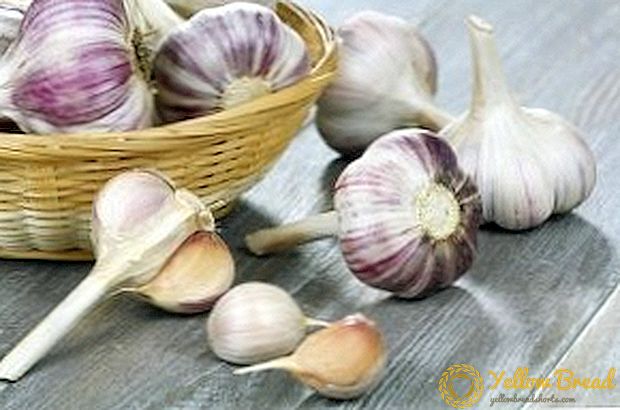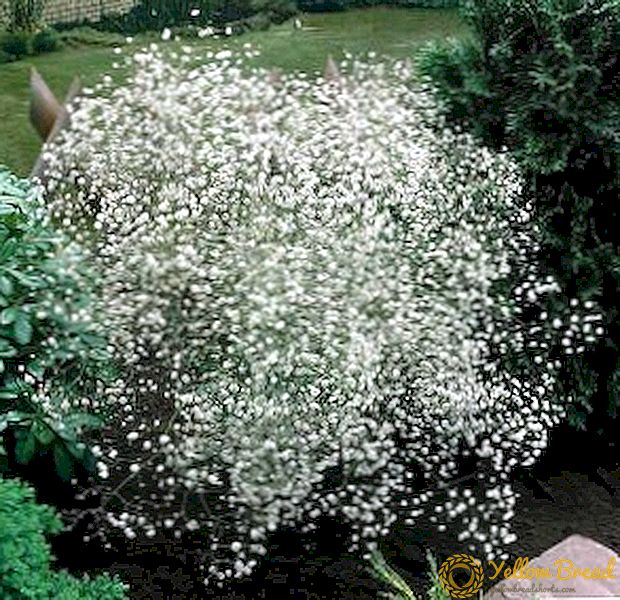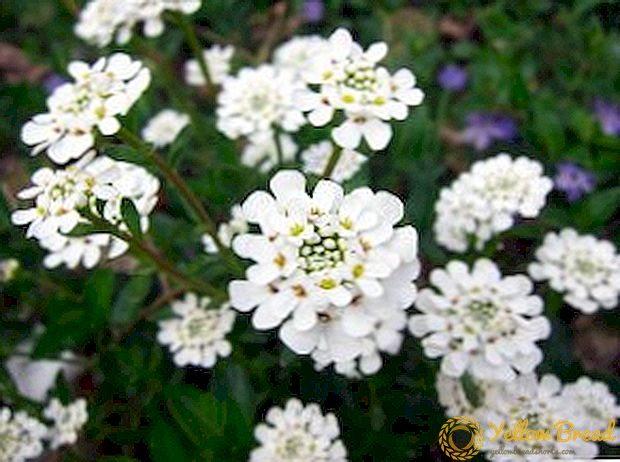 Pear confidently ranks second in popularity among fruits, second only to apples. And the pear “Noyabrskaya” is a rare case when even in the harsh conditions of the northern terrain tasty juicy fruits can be grown on the site.
Pear confidently ranks second in popularity among fruits, second only to apples. And the pear “Noyabrskaya” is a rare case when even in the harsh conditions of the northern terrain tasty juicy fruits can be grown on the site.
In the article we will give a description of this variety, we will tell about its advantages and peculiarities of cultivation.
- Breeding history
- Description and distinctive features of the variety
- Wood
- Fruits
- Advantages and disadvantages
- pros
- Minuses
- What to look for when choosing seedlings
- The choice of space
- Pre-work
- Step-by-step process of planting seedlings
- Seasonal care features
- Soil care
- Top dressing
- Preventive spraying
- Pruning
- Protection against cold and rodents
Breeding history
The variety was bred in the distant 50s of the last century in the Far Eastern Agricultural Research Institute. The author, breeder A. V. Bolonyaev, by crossing the Belgian Winter Deccan and the domestic Ussuriisk, received a new variety, hardy and hardy.
This new pear and called "November." After all the tests, in 1974 recommendations were obtained on pear cultivation in the Far East.
At this time, "Noyabrsk" successfully grown in Zabarovsky Krai and throughout the Primorsky district. For the November variety, pears are good pollinators. "Favorite Clapp", "Williams Summer", "Hoverla", "Conference". 
Description and distinctive features of the variety
Pear looks "November" very impressive. Consider a more detailed description.
Wood
The powerful spreading tree of this variety has a strong growth potential. Forms a crown in the form of a ball, but more often in the form of a pyramid. Crohn dense, strongly branched. The bark of a dark, green-burgundy color. Fruits appear on branches not younger than two or three years. The leaves are elongated oval, dark grassy, dense to the touch.
The bark of a dark, green-burgundy color. Fruits appear on branches not younger than two or three years. The leaves are elongated oval, dark grassy, dense to the touch.Fruits
Because of its zoning in the harsh lands, the fruits of the "November" does not grow large. The average weight of a pear is 60-70 grams. In warm climates and with good care, weight increases.
In shape, these pears are more elongated than other varieties, unequal, with pronounced edges. The color practically does not change, so the whole growth period of the pears retains a bright green color.
After removal, during storage, the color changes in the direction of yellow with a small blush.
 The flesh is white, dense, with a pleasant sweet taste. The best taste becomes closer to the New Year, during storage.
The flesh is white, dense, with a pleasant sweet taste. The best taste becomes closer to the New Year, during storage.Advantages and disadvantages
Wanting to grow such a pear, you should remember and take into account all the pros and cons of this variety.
pros
The indisputable advantages include:
- constant and abundant yield. From one tree it is possible to collect 40-60 kg of fruits during the whole period of life;
- early fruiting. For the second or third year of life, the tree is capable of producing a bountiful harvest;
- frost resistance;
- resistance to fungal diseases;
- pears hang tightly on the branches even in very severe weather conditions;
- high shelf life of fruits;
- resistance to burns;
- good pear transportability.

Minuses
But it was not without flaws:- unpresentable type of fruit, which is why it is practically not used on an industrial scale;
- fruits of different sizes - there are both small and large.
As you can see, the advantages of this variety are much greater than the disadvantages.
What to look for when choosing seedlings
Buy seedlings best in nurseries, specializing in the cultivation of fruit trees. Or have a proven amateur gardeners.
Choosing a sapling, pay attention to the condition of its roots. They should be big and powerful. This will be a guarantee that the tree will take root and will quickly grow.
Another indicator is the status of the graft, the stock and the connections between them. All this should be durable, alive and green. The junction must be clean, strong, without cracks.  The trunk of the seedling is necessarily smooth, durable, with a whole bark, not frozen, without damage and gum flows.The best seedlings will be grown in your climate zone and in your region.
The trunk of the seedling is necessarily smooth, durable, with a whole bark, not frozen, without damage and gum flows.The best seedlings will be grown in your climate zone and in your region.
The choice of space
A good place to grow pears has three important qualities:
- a lot of light. Any plant loves plenty of sunshine. Pear is no exception;
- a lot of air, but little wind. Despite the resistance to extreme weather and fortress, the pear "Noyabrskaya" does not tolerate drafts. Especially winter wind, they are able to freeze the tree;
- shallow groundwater occurrence. Tree roots do not accept close contact with water. Therefore, it is optimal to grow a garden in the hills.
So, the best place to break the garden will be the south side of the site, protected from the wind and located on a hill.

Pre-work
Preparation for landing begins with the choice of landing time. In warm areas, planting in the fall will be a better choice: the tree has enough moisture for rooting, there is no need for additional watering and there is no need to waste the energy of the tree on the leaves - everything grows.
But if your region has severe frosty winters, then it is necessary to plant a pear in the spring - so that during the warm season it can gain strength, take root and prepare for winter.
Site preparation begins with digging a landing pit, with a diameter of about 50-60 cm and a depth of no more than 30 cm. When planting in the autumn, a hole is dug for a month, and in spring, it is prepared in autumn.
But before that, do not forget to clean the area from weeds, remove all perennial and annual plantings. At the bottom of the pit you need to lay rubble, stones, sand to organize drainage.
Add chernozem, compost or humus, and fertilizers (superphosphate plus potassium) to the prepared well. And after a while trees can be planted in this land. 
Step-by-step process of planting seedlings
So, the pit is ready, a month or the whole winter (depending on the planting season) we have withstood. Now we start planting the trees themselves.
Before planting, soak the roots of trees in the water for 12-20 hours, and just before planting, dip them in a clay suspension.
A peg is installed in the center of the planting hole, to which the seedling will later be tied. They put a tree near the peg and gently straighten the roots so that they look in all directions evenly.
Now you can fall asleep ground. They do it slowly, carefully, falling asleep to the roots from all sides. It is necessary to fill up the seedling so that its root neck is 2-3 cm above the ground.
Having filled up and lightly tamped down the ground (only carefully, do not damage the roots), make a hole near the tree trunk for watering the plant.
The formed tree trunk is mulched with compost, leaves or grass.
Seasonal care features
Pear care "November" is not much different from the care of other fruit trees. It includes watering, weeding, protection from pests and damage, and crown formation.
Soil care
Watering should be carried out regularly. In a typical year, 2-3 buckets of water are enough for one tree. During drought and in very hot periods, the norm can be increased by 1.5-2 times. Watering a pear is not very often - 2-3 times in the warm season.
The first time - in the spring, before the appearance of buds, the second time after flowering and the third watering - after harvesting and the beginning of leaf fall.
Sprinkling can be considered an ideal irrigation method. when splashing water simulates real rain. In this case, not only roots get moisture, but all parts of the plant - leaves, branches.
 After each care, it is necessary to loosen the soil in a circle. This makes it possible to provide the roots of the plant with air and maintain humidity at the required level.
After each care, it is necessary to loosen the soil in a circle. This makes it possible to provide the roots of the plant with air and maintain humidity at the required level.The combination of this procedure with weeding will also get rid of weeds that can take moisture and food from the tree.
To preserve moisture at the roots, after each watering and loosening, mulch the ground in the near-stem circle. A layer of compost, humus, sawdust or peat (or rather a mixture of all these components) will protect the tree from weathering, drying, and weed growth.
Top dressing
The application of organic and mineral fertilizers provides the tree with a normal supply of all the necessary nutrients for growth and development.
In the first year of the tree life, fertilizing should not be done. But from the second plant will not damage fertilization.
In the spring, to improve the growth of green mass, feed your garden with nitrogen fertilizers (ammonium nitrate, urea, nitroammofoska).  In the autumn, after collecting pears, add a potassium-phosphorus mixture (potassium chloride and superphosphate). At the same time, you can add wood ash. Organic fertilizers (in the form of mullein or liquid manure) are applied every two to three years.
In the autumn, after collecting pears, add a potassium-phosphorus mixture (potassium chloride and superphosphate). At the same time, you can add wood ash. Organic fertilizers (in the form of mullein or liquid manure) are applied every two to three years.
Preventive spraying
Preventive treatment of trees is carried out in the spring, before bud break. The purpose of this procedure is to protect the pear from pests and diseases, as well as the destruction of overwintered pests.
Spraying can be done in two stages. In early spring, treat the trees with diesel fuel. It will form an oily coating and block the access of oxygen to insects living on the pear.
In a few hours the tree will be almost completely free from pests. Later, before the start of bud break, it is worth treating pears with Bordeaux liquid and copper sulfate. This will protect the garden from fungal diseases.
Pruning
Pruning is a mandatory step in the formation of a beautiful tree. Begin pruning immediately after landing. In the first year, the seedling column is shortened to 50 cm in length.  Later they begin to form skeletal branches in accordance with the chosen method of crown formation.
Later they begin to form skeletal branches in accordance with the chosen method of crown formation.
The basic rule of pruning - shoots are shortened by about a quarter, the central pillar should be 20-30 cm higher. All competing shoots are pruned.
Older tree pruned for rejuvenation and sanitation. Anti-aging pruning is carried out in the spring, before the appearance of the kidneys.
Sanitary - in the autumn, after dropping the leaves.Try to carry out the autumn pruning so that the frost does not damage the pruned branches.
Protection against cold and rodents
Protection from cold will be necessary for a pear only in severe winters and in areas blown by winter winds.
Fill the trunk circle with a thick layer of peat or manure, and wrap the stamp of the tree with warming material, lapnik or protective net. This will not only protect the tree from the cold, but also protect it from rodents.  So, we have established that the pear "Noyabrskaya" is a simple and convenient variety in planting and care that will provide you with a bountiful harvest. Even living in cold lands, with such a tree, you will be able to please yourself and your home with fresh and tasty fruits until spring.
So, we have established that the pear "Noyabrskaya" is a simple and convenient variety in planting and care that will provide you with a bountiful harvest. Even living in cold lands, with such a tree, you will be able to please yourself and your home with fresh and tasty fruits until spring.

